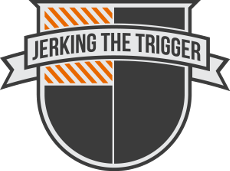Princeton Tec recently announced a new head lamp that has really piqued my interest. It’s called the Byte which is an obvious reference to its small size. It packs some huge functionality into its small frame.

The Byte has a white LED with a reflector that will give you the ability to light up objects at a distance and a small red LED that is useful for maintaining your dark adjusted vision and extending your battery life. It uses 2 AAA batteries to stay very small while still offering some decent output (35 lumens on high) and very good run time (80 hours). The white LED also has a low setting for even longer run times.
I confirmed with Princeton Tec that the Byte does turn on in the red LED setting. This is an excellent feature. Features like this allow the user to turn on their light without completely obliterating their dark adjusted vision and while staying discreet. Kudos to Princeton Tec for adding this feature to more of their lights. However, the light must still be shuffled through all the brightness levels in order to turn it off. Hopefully this can be fixed in a later release.
The street price on this full featured head lamps is going to be around $20 which is a great deal for Princeton Tec rugged construction and quality. I am really looking forward to getting my hands on one of these to try out.

 I know a lot of people have been waiting for a light like this from Surefire.
I know a lot of people have been waiting for a light like this from Surefire.











 It shares several features with the regular PolyTac LED like a “clickie” tailcap, IPX7 waterproof rating, 3 hours runtime (to 10% output), and durable polymer construction. However, the HP model increases the brightness to 150 lumens (versus 130 on the regular model) and features a wider, deeper reflector. Wider, deeper reflectors capture more of the light from the LED emitter and focus it into a tighter beam which results in a beam with a tight hot spot, more throw, and useful side spill. In other words, it should be a heck of a weapon light.
It shares several features with the regular PolyTac LED like a “clickie” tailcap, IPX7 waterproof rating, 3 hours runtime (to 10% output), and durable polymer construction. However, the HP model increases the brightness to 150 lumens (versus 130 on the regular model) and features a wider, deeper reflector. Wider, deeper reflectors capture more of the light from the LED emitter and focus it into a tighter beam which results in a beam with a tight hot spot, more throw, and useful side spill. In other words, it should be a heck of a weapon light.











 Surefire has released the new Z2-S, their first tactical light with a strobe function. It is a single output LED light (160 lumens) with a strobe function that is accessible by triple tapping the tail cap switch. This light also features their excellent “Combat Grip” which allows the user to hold the light several different ways while also holding a handgun. I also find that the rubber rings of the Combat Grip help lock your light into your light pouch for an extra measure of retention.
Surefire has released the new Z2-S, their first tactical light with a strobe function. It is a single output LED light (160 lumens) with a strobe function that is accessible by triple tapping the tail cap switch. This light also features their excellent “Combat Grip” which allows the user to hold the light several different ways while also holding a handgun. I also find that the rubber rings of the Combat Grip help lock your light into your light pouch for an extra measure of retention.